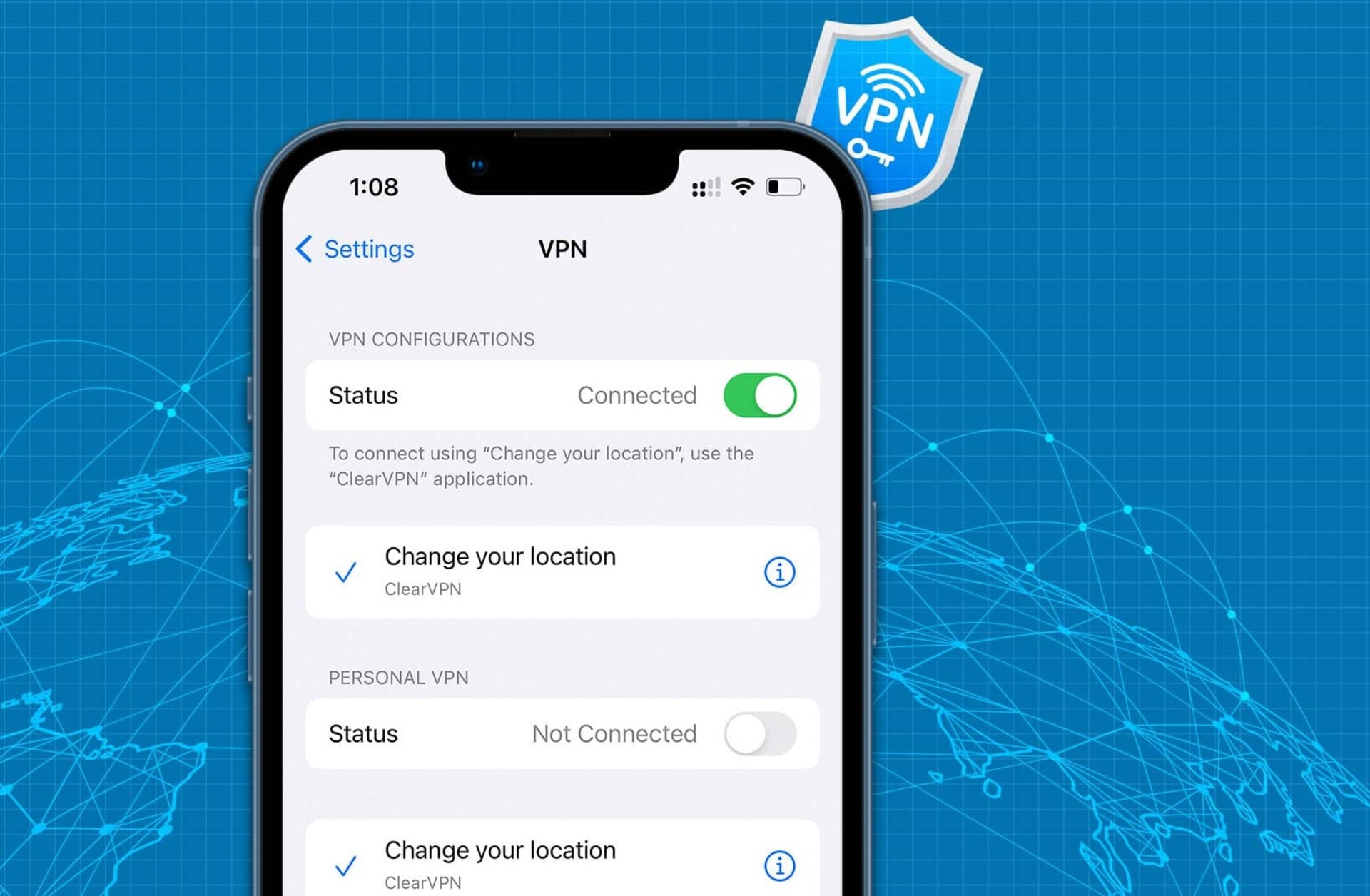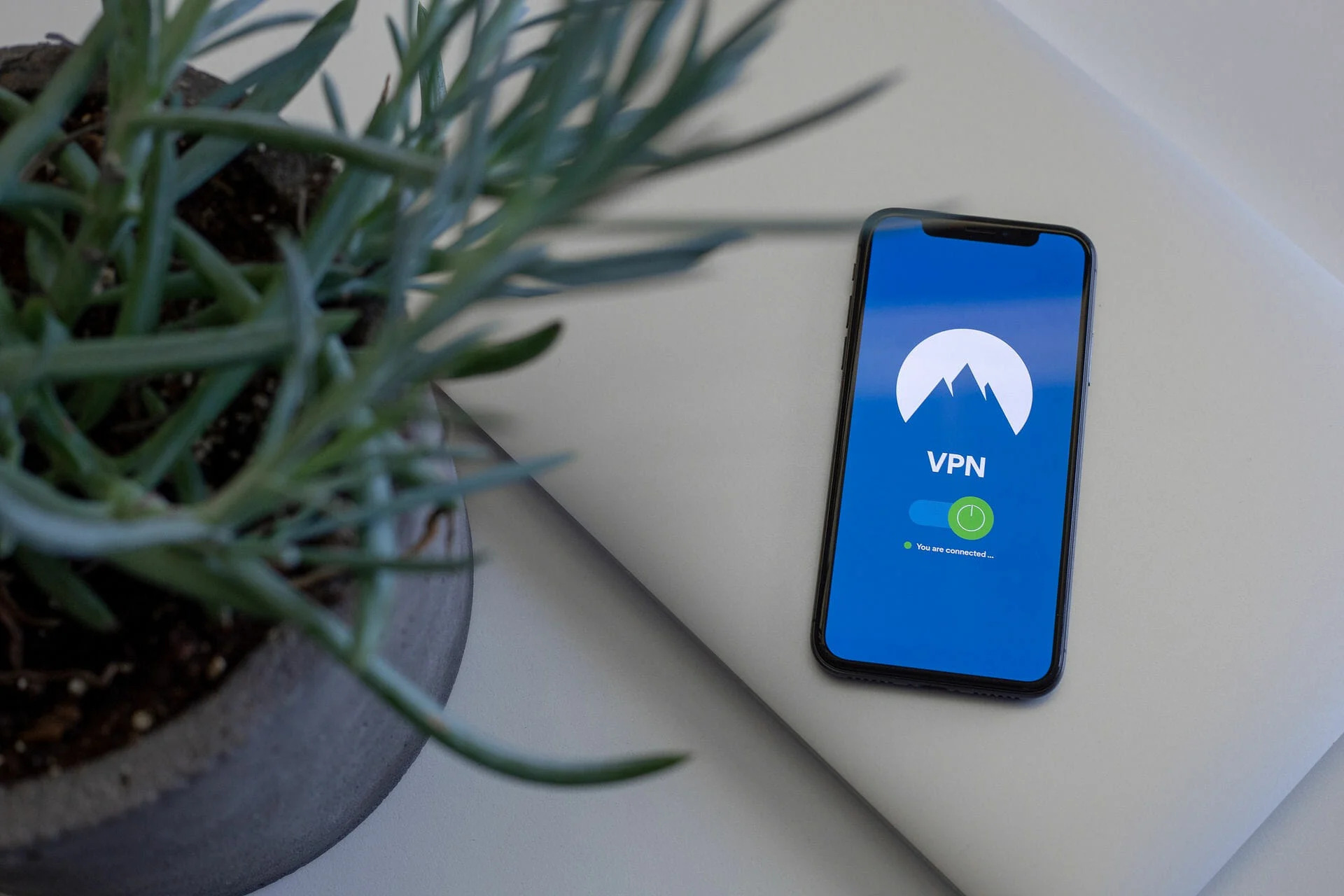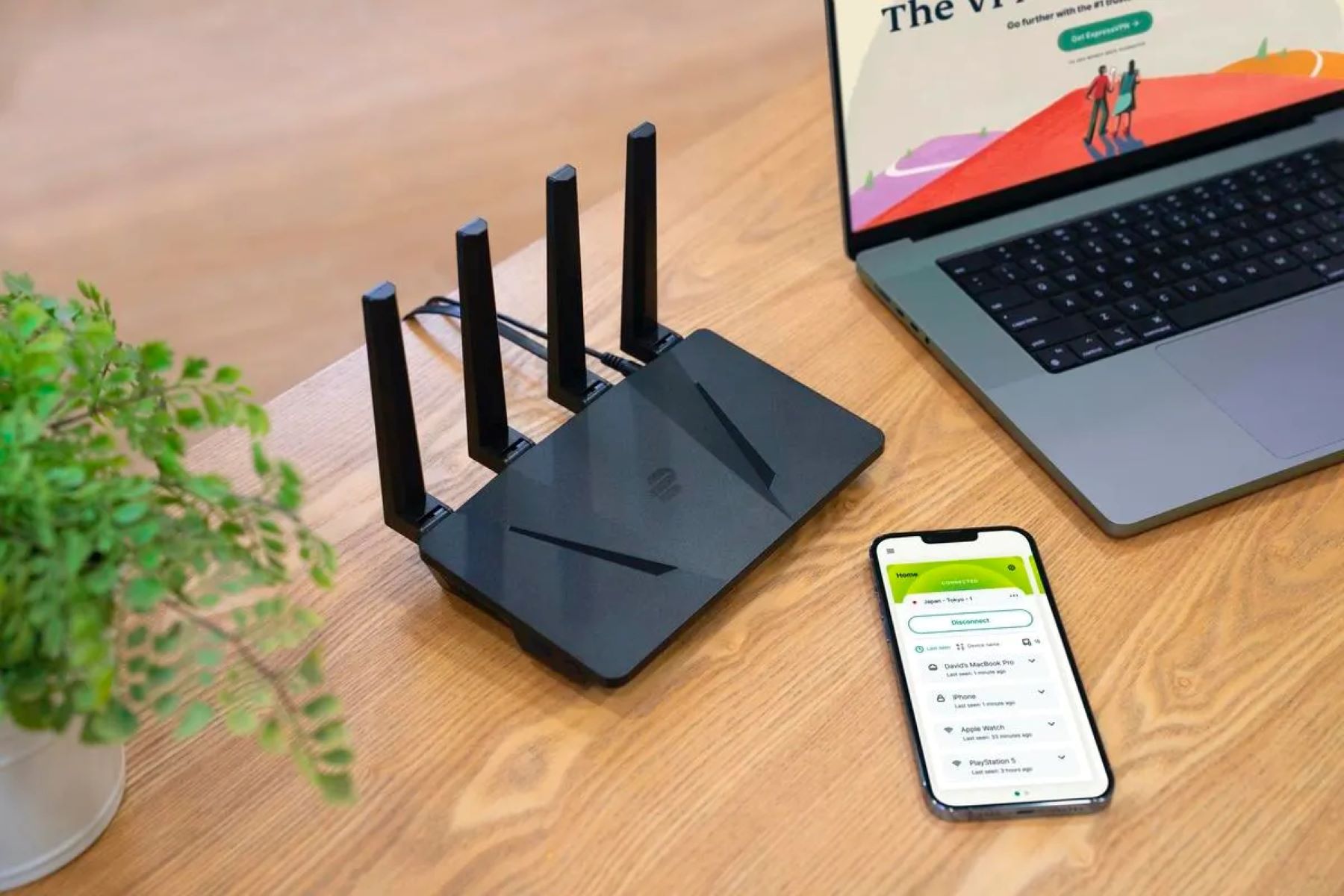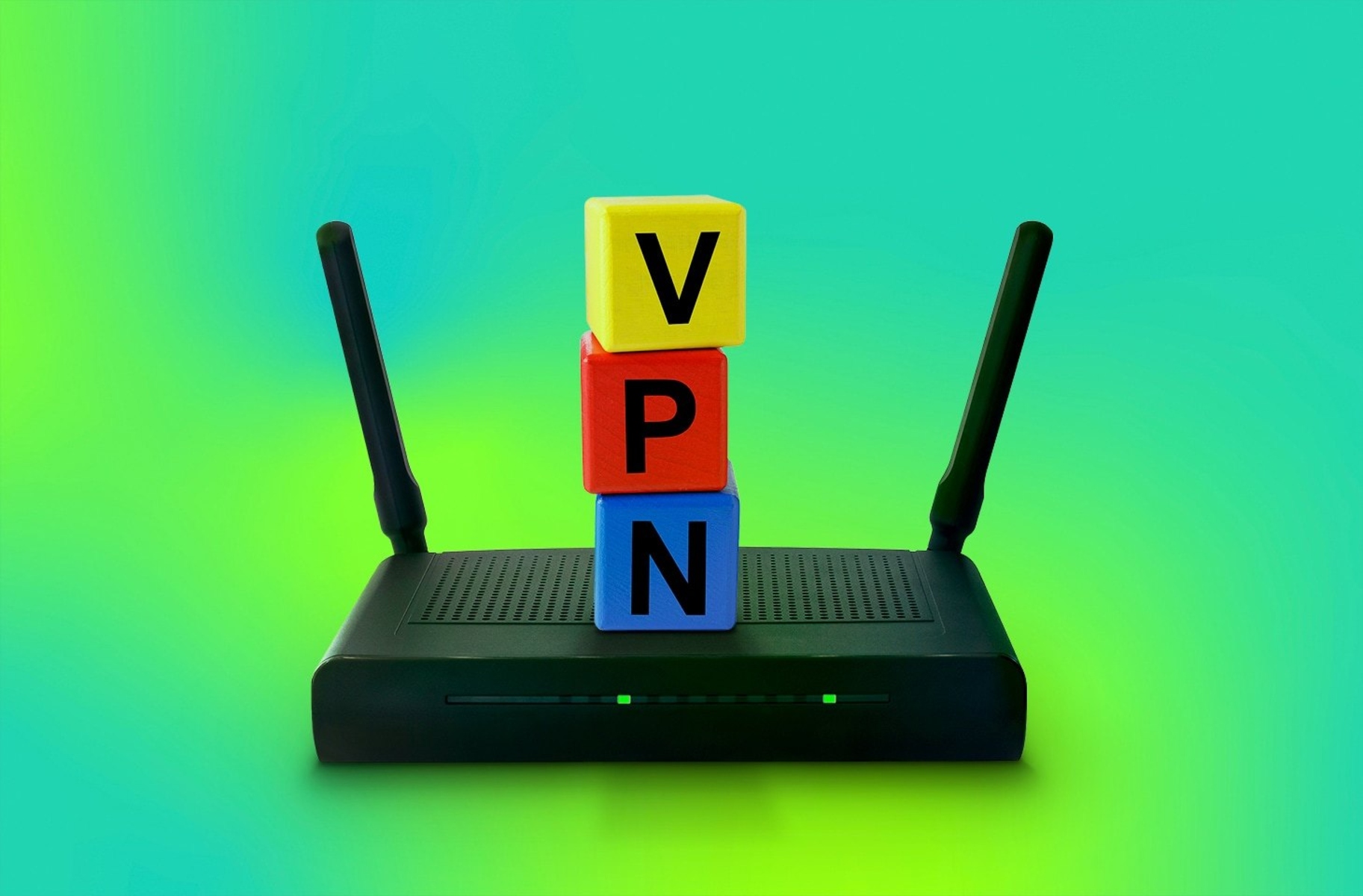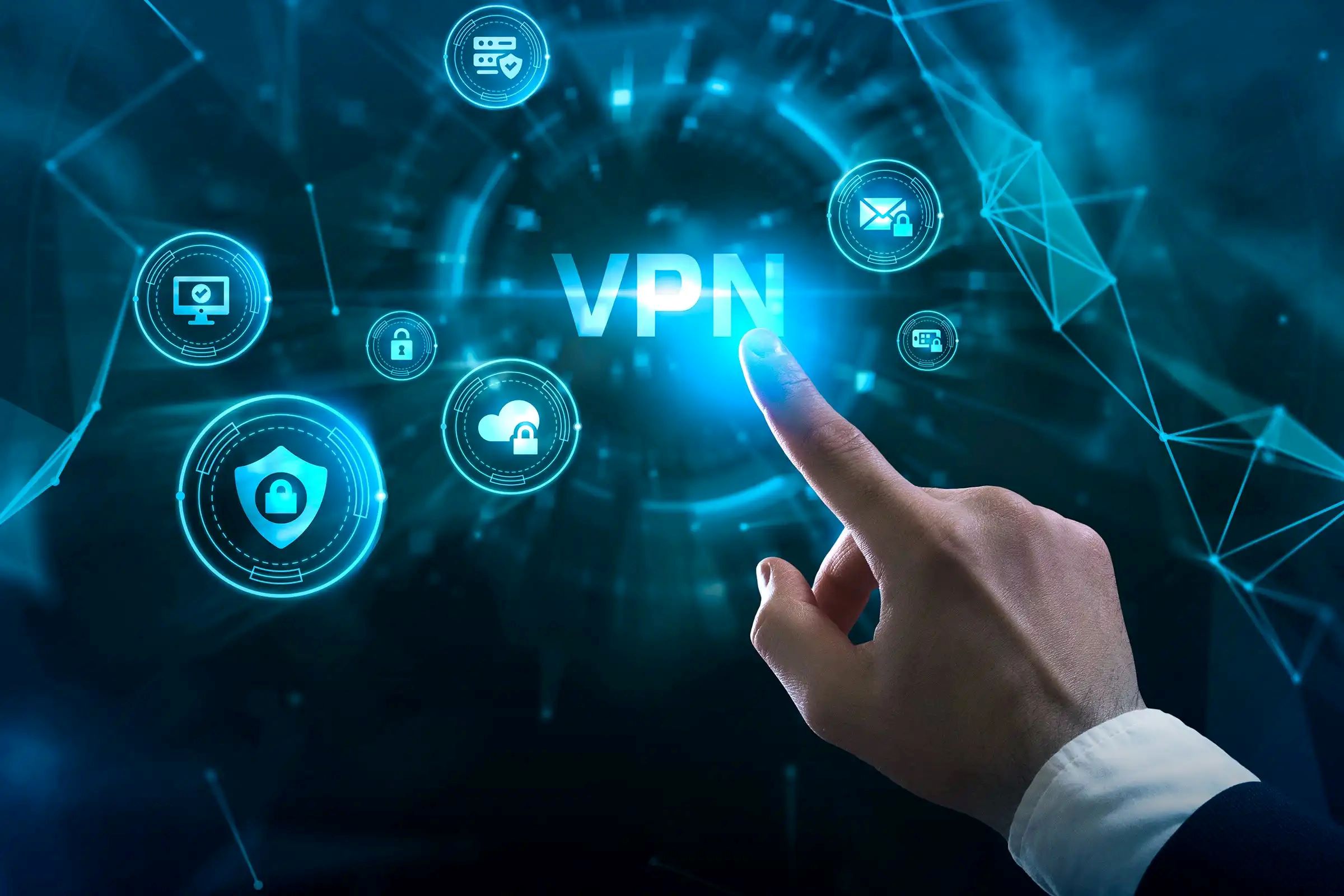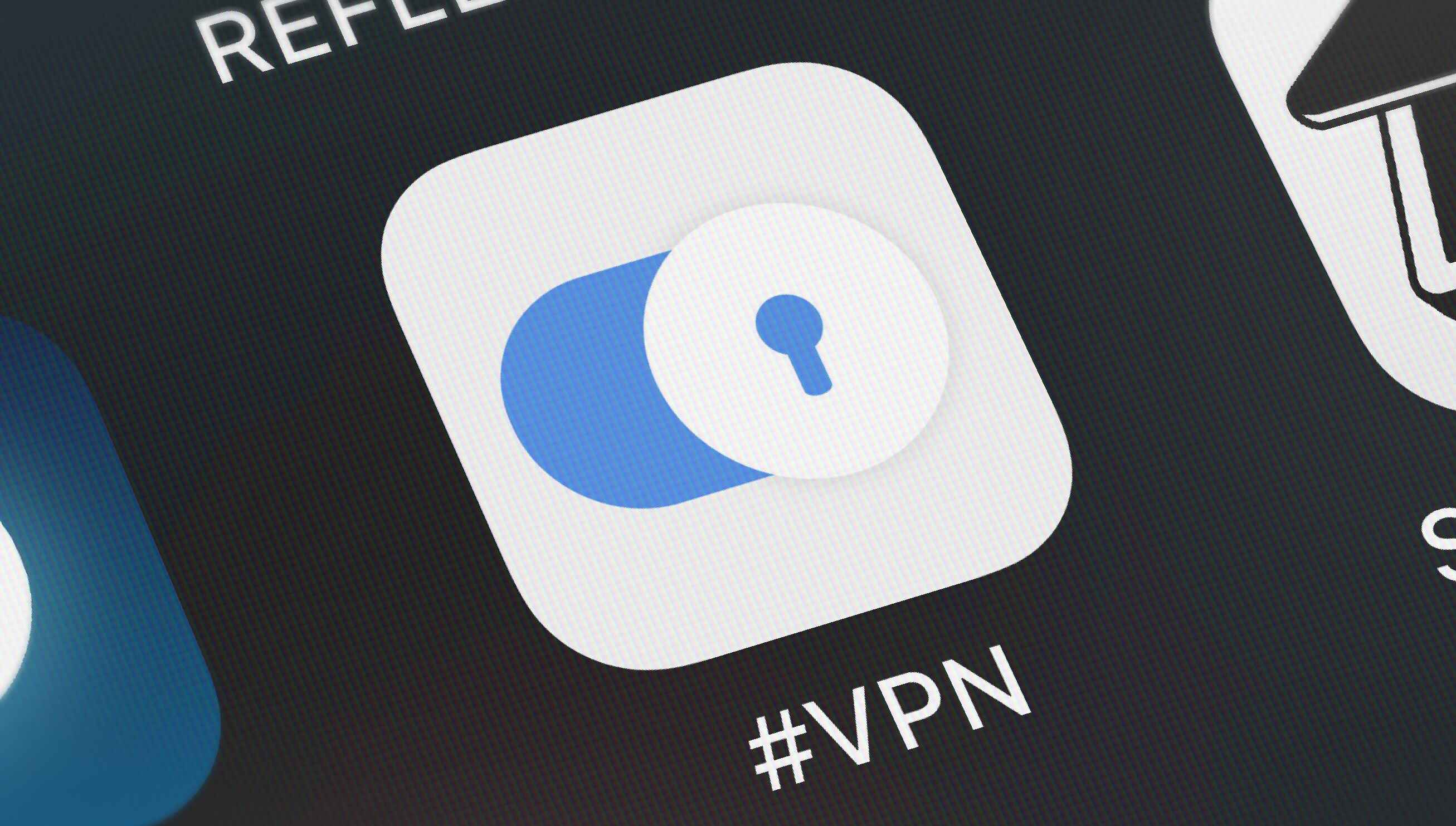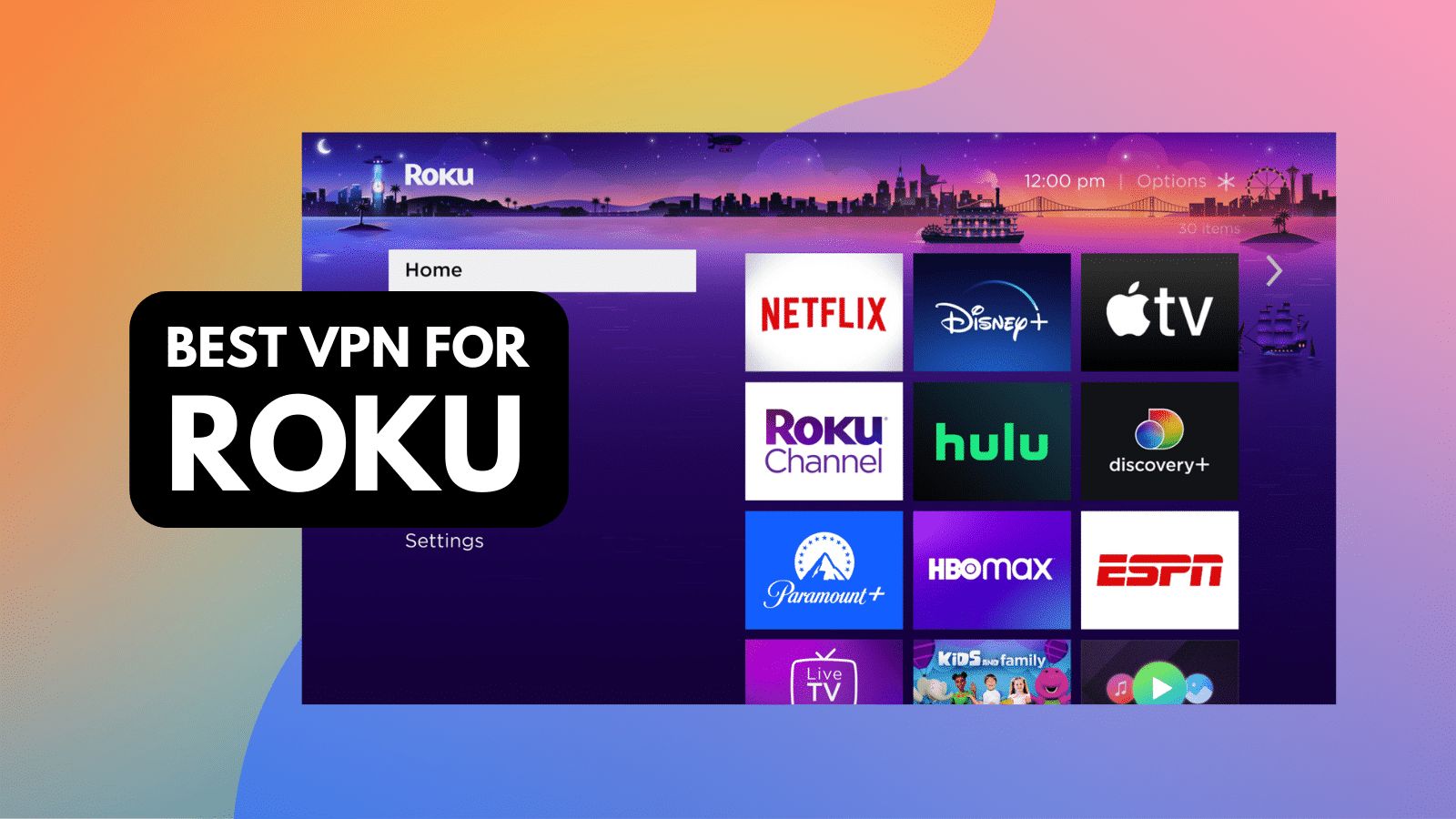Introduction
In today’s digital age, the need for online security and privacy is more important than ever. As we browse the internet, send sensitive information, and access various online platforms, our data becomes vulnerable to cyber threats and surveillance. This is where VPN configuration comes into play.
VPN, or Virtual Private Network, is a technology that enables users to create a secure connection over the internet. It encrypts data, making it unreadable to anyone who may try to intercept it. VPN configuration refers to the setup and customization of the VPN connection on your device, allowing you to tailor it to your specific needs.
Whether you are a business professional accessing confidential information remotely, an avid traveler connecting to public Wi-Fi networks, or simply someone who values online privacy, VPN configuration is a vital aspect of safeguarding your online activities.
By configuring a VPN, you can enjoy several benefits, including:
- Data encryption: VPN configuration secures your data by encrypting it, ensuring that your online activities cannot be intercepted or accessed by unauthorized individuals.
- Privacy protection: VPN configuration masks your real IP address, making it difficult for websites and applications to track your online behavior and gather personal information.
- Geo-restriction bypass: VPN configuration allows you to bypass geo-restrictions imposed by certain websites and streaming platforms, giving you access to content from different regions.
- Enhanced anonymity: VPN configuration adds a layer of anonymity to your online presence, making it challenging for anyone to trace your activities back to you.
In this article, we will explore the intricacies of VPN configuration, including common elements, different types, and how to set up a VPN on your device. Additionally, we will provide troubleshooting tips to help you resolve any issues you may encounter along the way.
So, if you’re ready to take control of your online security and privacy, let’s delve into the world of VPN configuration.
What is VPN Configuration?
VPN configuration refers to the process of setting up and customizing a Virtual Private Network (VPN) connection on your device. A VPN is a technology that creates a secure and encrypted connection over the internet, allowing you to browse the web, access online resources, and communicate privately. VPN configuration involves a series of steps to establish the connection and customize various settings to suit your specific needs.
When you configure a VPN, you establish a secure tunnel between your device and the VPN server. All your internet traffic passes through this encrypted tunnel, making it inaccessible to anyone outside the VPN. This encryption ensures that your data remains private and protected from eavesdroppers, hackers, and potential surveillance.
VPN configuration involves several key elements, including:
- VPN Protocol: The VPN protocol determines the encryption and tunneling technology used for your connection. Common VPN protocols include OpenVPN, L2TP/IPsec, PPTP, and SSTP. Each protocol has its own strengths and weaknesses in terms of security and speed, so choosing the right one is crucial.
- Server Selection: VPN configuration allows you to choose the server location from a list of options provided by your VPN service. Selecting the right server can help you bypass geo-restrictions, improve connection speeds, and enhance anonymity.
- Authentication: VPN configuration involves setting up authentication methods, such as passwords, certificates, or two-factor authentication, to ensure that only authorized users can connect to the VPN.
- Encryption Settings: You can customize the level of encryption used by the VPN. Most VPNs offer high-grade encryption, such as AES-256, ensuring that your data remains secure even when transmitted over public networks.
- Network Settings: VPN configuration allows you to specify whether you want all your internet traffic to go through the VPN or only certain applications or websites. You can also configure options such as split tunneling and DNS settings.
By configuring these elements, you can tailor your VPN connection to meet your specific requirements. Whether you prioritize security, anonymity, or access to restricted content, VPN configuration enables you to optimize your online experience.
Setting up a VPN configuration varies depending on the device and operating system you are using. However, most VPN providers offer user-friendly apps and step-by-step instructions to simplify the configuration process.
Now that we have a clear understanding of VPN configuration and its key elements, let’s explore why you may need VPN configuration in the first place.
Why Do You Need VPN Configuration?
In today’s digital landscape, where cyber threats and online surveillance are prevalent, VPN configuration has become a necessity. Here are some key reasons why you may need VPN configuration:
1. Enhanced Online Security: VPN configuration provides an extra layer of security by encrypting your internet traffic. This encryption protects your data from potential hackers, identity thieves, and other malicious actors who may try to intercept your information.
2. Privacy Protection: VPN configuration helps to safeguard your privacy by masking your real IP address and location. It prevents websites, advertisers, and third-party trackers from tracking your online activities and collecting your personal information.
3. Access to Restricted Content: VPN configuration allows you to bypass geo-restrictions and censorship imposed by governments or content providers. With a VPN, you can access websites, streaming services, or social media platforms that may be blocked in your country or region.
4. Secure Remote Access: If you work remotely or travel frequently, VPN configuration is essential for secure access to your company’s network. It ensures that your sensitive business data remains encrypted and protected, even when connected to untrusted public Wi-Fi networks.
5. Anonymous Browsing: VPN configuration helps to preserve your anonymity online by making it difficult for anyone to track your internet activities back to your real identity. This is particularly important if you want to browse the web without being targeted by personalized advertisements or government surveillance.
6. Shielding from Throttling: Internet service providers (ISPs) sometimes limit the bandwidth for certain activities such as streaming or torrenting. VPN configuration can help to bypass these limitations, allowing you to enjoy faster speeds and a more seamless online experience.
7. Wi-Fi Security: Public Wi-Fi networks are notorious for security vulnerabilities. VPN configuration ensures that your data remains encrypted and protected when using public Wi-Fi hotspots, reducing the risk of your personal information being intercepted by hackers.
These are just a few examples of why VPN configuration is essential in today’s digital world. By prioritizing your online security, privacy, and unrestricted access to content, VPN configuration empowers you to take control of your internet experience.
Common VPN Configuration Elements
VPN configuration involves various elements that are essential for setting up and customizing your VPN connection. Let’s take a closer look at some of the most common VPN configuration elements:
1. VPN Protocols: VPN protocols define the encryption and tunneling methods used to establish a secure connection. Some commonly used protocols include OpenVPN, L2TP/IPsec, PPTP, and SSTP. Each protocol has its own advantages and considerations in terms of security and performance.
2. Server Selection: When configuring a VPN, you can choose from multiple server locations provided by the VPN service. Selecting the right server location allows you to bypass geo-restrictions, improve connection speeds, and optimize your online experience.
3. Authentication Methods: VPN configuration includes setting up authentication methods to ensure that only authorized users can access the VPN connection. This can involve using passwords, digital certificates, or two-factor authentication for enhanced security.
4. Encryption Settings: Encryption is a crucial aspect of VPN configuration. You can customize the level of encryption used by your VPN connection, with AES-256 being the most secure option. Configuring encryption ensures that your data remains protected and private during transit.
5. Network Settings: VPN configuration allows you to specify how your internet traffic will be routed through the VPN. You can determine whether all traffic or only specific applications and websites will use the VPN connection. Additionally, you can configure settings such as split tunneling, DNS (Domain Name System) settings, and IPv6 leak protection.
6. Kill Switch: A kill switch is an essential feature in VPN configuration. It automatically stops internet traffic if the VPN connection drops, preventing your data from being exposed to unsecured networks. This ensures that your activities remain private and secure at all times.
7. Logging Policy: VPN services may have different logging policies, which determine the extent of data they collect and retain about your online activities. When configuring a VPN, it’s important to review the provider’s logging policy and opt for a service that aligns with your privacy requirements.
8. Client Software and Compatibility: VPN configuration involves installing and configuring the VPN client software on your device. The software should be compatible with your operating system and offer user-friendly features and options for a seamless VPN experience.
These are just a few common VPN configuration elements that play a crucial role in customizing your VPN connection. By understanding and configuring these elements, you can enhance the security, privacy, and performance of your VPN connection.
Types of VPN Configurations
VPN configurations can vary depending on the specific requirements and network setup. Let’s explore some common types of VPN configurations:
1. Remote Access VPN: This type of VPN configuration allows individual users to connect securely to a private network remotely. Remote access VPNs are commonly used by employees who need to access company resources and files from outside the office. This configuration ensures that data transmission between the remote user and the private network is encrypted and secure.
2. Site-to-Site VPN: Also known as a router-to-router VPN, a site-to-site VPN configuration connects two or more local area networks (LANs) in different locations. This enables secure communication between the connected networks, as if they were directly connected within the same physical location. Site-to-site VPNs are commonly used by businesses with multiple branch offices or organizations that need to securely share resources and data between different locations.
3. Client-to-Site VPN: In this VPN configuration, individual users connect their devices (clients) to a secure network (site) using VPN software. This allows remote workers or traveling employees to access the private network resources and applications from anywhere. The client-to-site VPN ensures that the data transmitted between the client device and the site is encrypted and protected from unauthorized access.
4. Layer 2 Tunneling Protocol (L2TP) over IPsec: L2TP over IPsec is a commonly used VPN configuration that combines the best features of both protocols. L2TP provides the tunneling mechanism, while IPsec offers the encryption and security. This configuration provides a high level of security while maintaining compatibility with a wide range of devices and operating systems.
5. OpenVPN: OpenVPN is an open-source VPN protocol that is highly customizable and widely supported. It uses OpenSSL, a robust encryption library, to establish a secure VPN connection. OpenVPN can operate on both UDP (User Datagram Protocol) and TCP (Transmission Control Protocol), providing flexibility and reliability in different network conditions.
6. Point-to-Point Tunneling Protocol (PPTP): PPTP is an older VPN protocol that offers a simple and easy-to-configure VPN configuration. It is widely supported by various operating systems and devices. PPTP is known for its fast connection speeds but may not offer the same level of security as other protocols.
These are just a few examples of the types of VPN configurations commonly used. The choice of VPN configuration depends on the specific needs, network architecture, and security requirements of the organization or individual.
Now that we have explored different types of VPN configurations, let’s dive into the process of configuring a VPN on your device.
How to Configure a VPN
Configuring a VPN on your device may seem like a daunting task, but with the right guidance, it can be a straightforward process. Here are the general steps to follow when configuring a VPN:
1. Choose a VPN Provider: Start by selecting a reliable VPN service provider that meets your requirements in terms of security, server locations, speed, and pricing. There are numerous options available, so take your time to research and choose a reputable VPN provider.
2. Sign up and Install VPN Software: Sign up for an account with your chosen VPN provider and download and install their VPN software or app on your device. VPN providers often offer applications for various platforms, including Windows, macOS, iOS, and Android.
3. Launch the VPN App: Open the VPN app on your device and log in using your credentials. Familiarize yourself with the app’s interface, as it will vary depending on the VPN provider.
4. Select a Server Location: Depending on your VPN app’s interface, you will typically have the option to choose a server location from a list provided by the VPN provider. Select a server location that suits your needs, whether it’s for security, bypassing geo-restrictions, or optimal performance.
5. Configure VPN Settings: If your VPN app offers customizable settings, you can adjust them according to your preferences. These settings may include encryption levels, protocol selection, DNS (Domain Name System) settings, and kill switch functionality. However, it’s recommended to keep most settings at their default values unless you have specific requirements.
6. Connect to the VPN: Once you have selected a server location and configured the settings, click the “Connect” button or toggle switch within your VPN app to establish the VPN connection. You will usually see an indication that you are connected to the VPN, such as a change in your IP address or a connected status in your app’s interface.
7. Test the VPN Connection: After establishing the VPN connection, it’s always a good idea to test it to ensure everything is working as intended. Visit a website that displays your IP address, such as “whatismyip.com,” to confirm that your IP address has changed to the one associated with the VPN server location you selected.
8. Customize Additional Preferences: Some VPN apps offer additional customization options, such as app-specific settings or advanced features like split tunneling. Explore the app’s settings or preferences to customize the VPN experience further, according to your needs.
It’s important to note that the steps to configure a VPN may vary slightly depending on the VPN provider and the device or operating system you are using. However, most VPN providers offer user-friendly apps and detailed setup guides to assist you in the configuration process.
Now that you have successfully configured your VPN, let’s delve into some common troubleshooting tips for VPN configurations.
Troubleshooting VPN Configurations
While configuring a VPN is generally a smooth process, there may be instances where you encounter issues or experience connectivity problems. Here are some common troubleshooting tips to help you resolve VPN configuration issues:
1. Check your Internet Connection: Before troubleshooting your VPN configuration, ensure that your internet connection is stable and working properly. Disconnect and reconnect to your Wi-Fi or Ethernet network to rule out any temporary connectivity issues.
2. Verify VPN Credentials: Double-check that you have entered the correct login credentials for your VPN provider. Make sure there are no typos or errors in the username or password fields.
3. Restart VPN App or Device: If you are experiencing connectivity issues with your VPN, try restarting the VPN app or your device. Sometimes, a simple restart can resolve temporary glitches and restore the VPN connection.
4. Switch VPN Server Locations: If you are unable to connect to a specific VPN server, try switching to a different server location provided by your VPN provider. It’s possible that the server you initially selected is experiencing high traffic or undergoing maintenance.
5. Check Firewall and Antivirus Settings: Firewall or antivirus software may sometimes block the VPN connection, resulting in connectivity issues. Temporarily disable the firewall or antivirus software and try connecting to the VPN again. If successful, adjust the settings to allow the VPN app or add it to the software’s whitelist.
6. Update VPN App or Firmware: Outdated VPN apps or firmware on your device can cause compatibility issues and connectivity problems. Ensure that you have the latest version of the VPN app installed. If applicable, also update your device’s firmware to ensure optimal performance and compatibility.
7. Contact VPN Support: If you have tried the above troubleshooting steps and are still experiencing issues, reach out to your VPN provider’s support team. They can provide specific guidance and assistance based on their product and infrastructure.
8. Test VPN on Different Network: To isolate the issue, try connecting to your VPN from a different network, such as a mobile hotspot or a different Wi-Fi network. If the VPN works on another network, it may indicate that the problem lies with your current network or internet service provider.
These troubleshooting tips should help resolve most common VPN configuration issues. However, if you continue to experience problems, it’s always advisable to reach out to your VPN provider’s support team for further assistance.
Now that you’re armed with troubleshooting techniques, you’re well-prepared to overcome any hurdles that may arise during VPN configuration.
Conclusion
VPN configuration is a crucial aspect of ensuring online security, privacy, and unrestricted access to the internet. By setting up and customizing a VPN connection on your device, you gain the power to encrypt your data, protect your privacy, bypass geo-restrictions, and securely access remote networks.
In this article, we explored the concept of VPN configuration and its importance in today’s digital age. We discussed the common elements of VPN configurations, including VPN protocols, server selection, authentication methods, encryption settings, network configurations, and more.
We also explored different types of VPN configurations, such as remote access VPNs, site-to-site VPNs, client-to-site VPNs, and specific VPN protocols like L2TP over IPsec and OpenVPN. Each type serves specific purposes, and the choice depends on the specific needs and network setup required.
Additionally, we provided a step-by-step guide on how to configure a VPN on your device, including choosing a VPN provider, signing up and installing the VPN software, selecting server locations, configuring settings, and troubleshooting common issues that may arise during the process.
Remember, VPN configuration is a powerful tool that empowers you to take control of your online security and privacy. It ensures that your data remains encrypted, your online activities are shielded from prying eyes, and your access to content is unrestricted.
As you venture into the world of VPN configuration, make sure to choose a reputable VPN provider, follow best practices for password and authentication management, and keep your VPN software and apps up to date. By doing so, you can maximize the benefits and enjoy a secure and private online experience.
So, whether you’re a business professional accessing sensitive information, a frequent traveler connecting to public Wi-Fi networks, or someone who values online privacy, VPN configuration is an essential step towards protecting yourself in the digital realm.
With the knowledge and insights gained from this article, you are now equipped to navigate the world of VPN configuration confidently. Stay safe, secure, and enjoy the freedom that VPN configuration brings!







